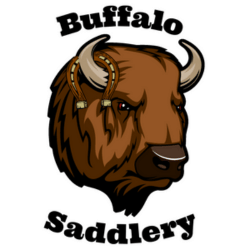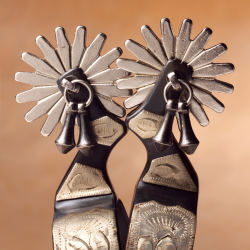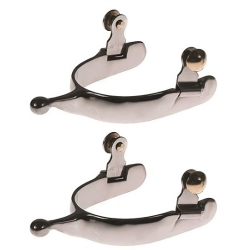If you've spent any time around horses, you've likely noticed a piece of equipment called a breast collar. It's a strap that goes across the horse's chest, attaching to the saddle or harness. But have you ever wondered what purpose it serves? In this blog post, we will explore the functionality of a breast collar and why it is an essential piece of equipment for horse riders and drivers. From preventing saddle slippage to enhancing control, we'll dive into the various benefits of using a breast collar. Additionally, we'll discuss different types of breast collars and how to properly fit and maintain them. So, if you're curious about what a breast collar does for horses, keep reading to find out more.
Understanding the Basics: What is a Breast Collar
A breast collar is a piece of equestrian equipment that is designed to secure the saddle in place and provide support to the horse's chest. It consists of a strap or multiple straps that run across the horse's chest, attaching to the saddle or harness on either side. The breast collar is typically made of leather or synthetic materials and is adjustable to fit different sizes of horses.
The primary purpose of a breast collar is to prevent the saddle from sliding backward during riding or driving activities. By keeping the saddle in place, it helps to maintain balance and stability for both the horse and the rider. In addition to its functional benefits, a breast collar can also be seen as a decorative element, especially in the show ring, where elaborate designs and embellishments are often used.
Breast collars are commonly used in various equestrian disciplines such as trail riding, ranch work, pleasure riding, and even in some types of driving. They provide additional security and control for the rider, especially in situations that involve steep slopes, quick turns, or sudden stops. By distributing the pressure evenly across the chest, a breast collar helps to prevent discomfort or potential injury to the horse.
In the next sections, we will delve deeper into the specific functions of breast collars, the different types available, how to properly fit them, and how to maintain their longevity. So, let's explore the world of breast collars and discover their importance in the equestrian world.
The Function of a Breast Collar
The function of a breast collar goes beyond its aesthetic appeal. It serves several important purposes in horse riding and driving. In this section, we will explore the primary functions of a breast collar in detail.
Preventing Saddle Slippage
One of the key functions of a breast collar is to prevent saddle slippage. When riding or driving, the saddle can sometimes shift backward, causing discomfort and potentially compromising the rider's balance. A properly fitted breast collar helps keep the saddle in place, preventing it from sliding too far back on the horse's back.
By securing the front of the saddle, the breast collar distributes the pressure more evenly across the horse's chest, reducing the likelihood of the saddle slipping backward. This is particularly important during activities that involve sudden movements, such as jumping, trail riding on uneven terrain, or engaging in fast-paced maneuvers.
Aiding in Balance and Stability
Another important function of a breast collar is to aid in the horse's balance and stability. When the saddle stays in its proper position, the horse can move more freely and comfortably. The breast collar's secure attachment to the saddle helps maintain a balanced load distribution, preventing the saddle from shifting to one side and causing the horse to become unbalanced.
By providing stability, the breast collar allows the horse to perform at its best, whether it's navigating challenging obstacles, executing precise movements in dressage, or participating in high-speed events. It also helps the rider maintain a centered position, allowing for better communication and control between horse and rider.
Enhancing Control for the Rider
A properly fitted breast collar can enhance the rider's control over the horse. It helps establish a connection between the rider's hands and the horse's front end, allowing for more accurate rein cues and aids. The breast collar helps prevent the horse from pulling the saddle forward, which can interfere with the rider's ability to communicate effectively through the reins.
With the added stability and control provided by the breast collar, riders can confidently navigate challenging terrain, perform intricate maneuvers, and maintain control in various riding disciplines. This is particularly important in disciplines such as roping, cutting, and reining, where precise control over the horse's movements is crucial.
In the next sections, we will explore different types of breast collars and their specific uses, as well as discuss how to properly fit a breast collar to ensure optimal functionality and comfort for both the horse and the rider.
Types of Breast Collars and Their Uses
Breast collars come in various types, each designed for specific purposes and disciplines. In this section, we will explore the different types of breast collars and their respective uses.
Pulling Collar
The pulling collar is a common type of breast collar used in draft and pulling activities. It is typically made of sturdy leather and features a wide, contoured strap that sits across the horse's chest. The pulling collar is designed to distribute the weight of heavy loads evenly and provide support for the horse during pulling tasks, such as hauling logs or working in agricultural settings.
Roping Collar
As the name suggests, the roping collar is primarily used in roping events and activities. It is typically made of heavy-duty leather and features a wide, stiff collar that helps prevent the saddle from sliding forward when the rider ropes cattle. The roping collar provides added stability and control, allowing the rider to confidently rope and handle livestock without worrying about the saddle shifting during the intense moments of roping.
Tripping Collar
Tripping collars are commonly used in western disciplines such as team penning, cutting, and ranch work. They are designed to prevent the saddle from sliding back when the horse is engaged in quick stops, turns, or sudden movements. Tripping collars are usually made of leather and have a wide, contoured shape to distribute pressure evenly across the horse's chest. They provide stability and aid in maintaining balance during high-intensity maneuvers.
Show Collar
In the world of horse shows and exhibitions, show collars are often used to add a touch of elegance and style to the horse's appearance. Show collars are typically made of high-quality leather and can feature intricate tooling, silver accents, or decorative stitching. While show collars may not have the same functional purpose as other types, they contribute to the overall aesthetic appeal and presentation of the horse in the show ring.
It's important to note that these are just a few examples of the different types of breast collars available. Depending on the specific discipline and activities you engage in, there may be other variations or specialized designs of breast collars that suit your needs.
In the next section, we will discuss the importance of properly fitting a breast collar to ensure optimal functionality and comfort for both the horse and the rider.
How to Properly Fit a Breast Collar
Properly fitting a breast collar is essential to ensure its functionality, comfort, and safety for both the horse and the rider. In this section, we will discuss the steps to fitting a breast collar correctly.
Measuring Your Horse for a Breast Collar
Before purchasing a breast collar, it's important to measure your horse to ensure you choose the right size. Here are the steps to measure your horse for a breast collar:
-
Measure the girth: Use a soft measuring tape to measure the circumference of your horse's chest just behind the horse's front legs. Make sure the tape is snug but not too tight.
-
Measure the shoulder-to-shoulder width: Measure the distance between the points of the horse's shoulders. This will give you an idea of the width of the breast collar that will comfortably fit your horse.
-
Note the measurements: Write down the measurements you have taken to reference when selecting a breast collar size.
Adjusting the Breast Collar for Comfort and Safety
Once you have purchased a breast collar that fits your horse's measurements, you need to adjust it properly. Here are the steps to adjust a breast collar for comfort and safety:
-
Attach the breast collar: Start by attaching the breast collar to the saddle or harness. Make sure it is centered and positioned slightly above the point of the horse's shoulders.
-
Adjust the length: Check the length of the breast collar straps. They should be long enough to allow the horse to move freely without restricting its shoulder movement, but not so loose that the breast collar hangs too low or becomes ineffective. Adjust the straps accordingly.
-
Check the fit: The breast collar should fit snugly against the horse's chest without causing discomfort or restricting breathing. Ensure that there is enough room for the horse to move its head and neck freely.
-
Secure the buckles: Once you have adjusted the breast collar to the desired fit, secure the buckles or fastenings properly. Ensure that they are fastened tightly enough to hold the breast collar in place but not so tight that they cause discomfort or restrict the horse's movement.
Testing the Fit
After adjusting the breast collar, it's important to test its fit to ensure it is properly secured and comfortable for the horse. Here are a few tests you can perform:
-
Range of motion: Allow the horse to move freely and observe its range of motion. The breast collar should not hinder the horse's shoulder movement or cause any discomfort.
-
Saddle stability: Mount the horse and check the stability of the saddle. The breast collar should prevent the saddle from sliding backward during riding or driving activities.
-
Comfort check: Monitor the horse for any signs of discomfort or irritation caused by the breast collar. Look for any rubbing or chafing on the horse's chest and adjust the breast collar if necessary.
By following these steps and performing the necessary tests, you can ensure that your horse's breast collar is properly fitted, providing optimal functionality, comfort, and safety during your equestrian activities.
In the next section, we will discuss the importance of maintaining and cleaning a breast collar to prolong its lifespan and ensure its effectiveness.
Maintaining and Cleaning a Breast Collar
Proper maintenance and cleaning of a breast collar are essential for prolonging its lifespan and ensuring its effectiveness. In this section, we will discuss the importance of maintaining and cleaning a breast collar, along with some helpful tips.
Regular Inspection for Wear and Tear
Regularly inspecting your breast collar is crucial to identify any signs of wear and tear. Check for any loose stitching, cracks, or fraying in the straps. Pay attention to the buckles, D-rings, and other hardware for signs of rust or damage. If you notice any issues, address them promptly to prevent further damage or potential safety hazards.
Cleaning Techniques for Leather and Synthetic Materials
The cleaning method for your breast collar will depend on the material it is made of. Here are some general cleaning techniques:
Leather Breast Collars:
-
Remove dirt and debris: Begin by wiping off any dirt or debris from the surface of the leather with a soft brush or cloth.
-
Use a leather cleaner: Apply a small amount of leather cleaner to a clean, damp cloth. Gently rub the leather in a circular motion to remove dirt and stains. Be sure to follow the instructions provided by the manufacturer of the leather cleaner.
-
Condition the leather: After cleaning, apply a leather conditioner to keep the leather soft and supple. This helps prevent cracking and maintains the longevity of the leather.
-
Allow drying: Allow the breast collar to air dry completely before using or storing it. Avoid exposing it to direct sunlight or using heat sources, as they can damage the leather.
Synthetic Breast Collars:
-
Remove dirt and debris: Wipe off any dirt or debris from the surface of the synthetic material using a soft brush or cloth.
-
Soap and water solution: Prepare a mild soap and water solution. Gently scrub the synthetic material with a soft brush or cloth, using the solution. Rinse thoroughly to remove any soap residue.
-
Allow drying: Allow the breast collar to air dry completely before using or storing it.
Proper Storage to Prolong Lifespan
Proper storage is essential to protect your breast collar when it's not in use. Here are some tips for storing your breast collar:
-
Clean and dry: Ensure that the breast collar is clean and completely dry before storing it. Moisture can cause mold or mildew growth, which can damage the material.
-
Avoid extreme temperatures: Store the breast collar in a cool, dry place away from direct sunlight or extreme temperatures. Excessive heat or cold can cause the material to deteriorate.
-
Hang or lay flat: Depending on the material and design of your breast collar, you can either hang it or lay it flat. Hanging can help maintain the shape, while laying it flat can prevent any stress on the straps or buckles.
By following these maintenance and cleaning practices, you can extend the lifespan of your breast collar and ensure its functionality and safety for years to come.
In the final section, we will summarize the key points discussed in this blog post and wrap up our exploration of what a breast collar does for horses.












































